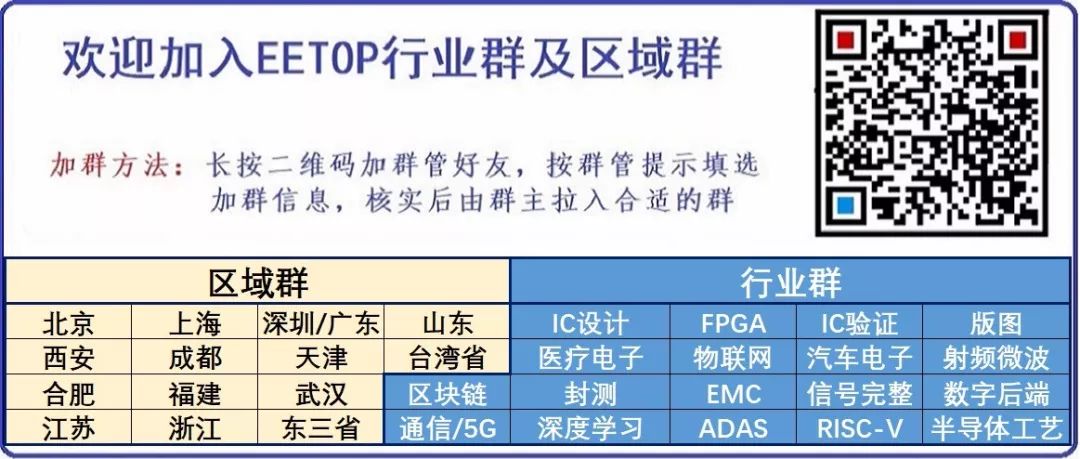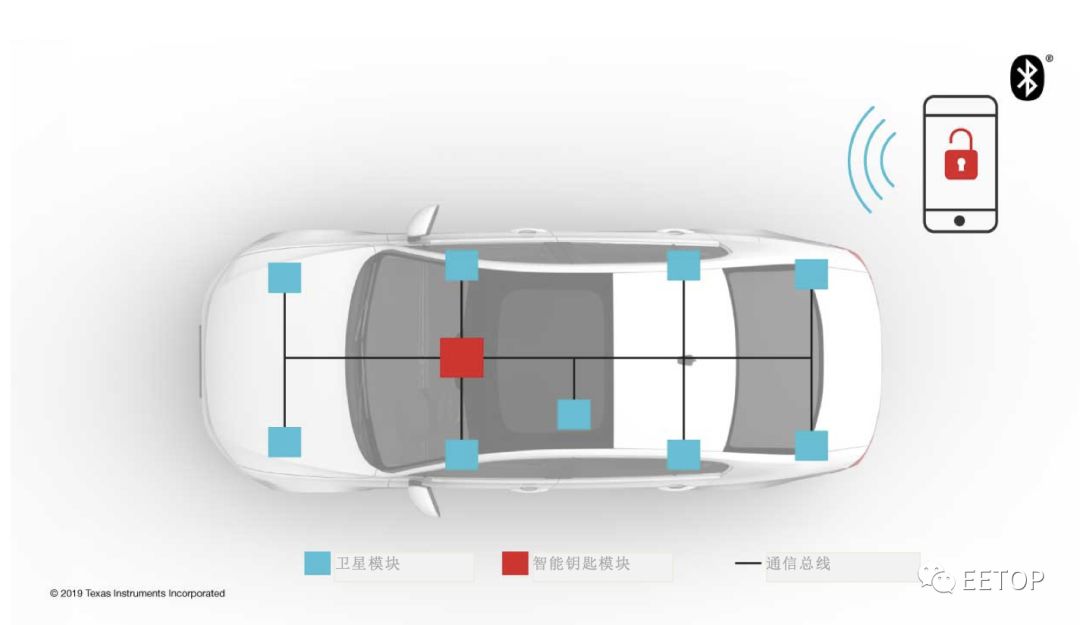EETOP focuses on chips and microelectronics, click the blue text above to follow us.

Source: Texas Instruments
To meet consumer demand for using smartphones instead of car keys, the automotive industry is undergoing significant transformation. With the rise of “phone-as-key” technology, traditional key cards are no longer necessary; using a smartphone allows for operation of the “Passive Entry/Passive Start” (PEPS) system. The leading advantage of Bluetooth® Low Energy technology is that it is a versatile technology widely applicable to smartphones.

Figure 1 shows a typical architecture for Bluetooth Low Energy PEPS in a vehicle, utilizing “phone-as-key” technology. This architecture includes a central smart key module and nine satellite modules, where the central smart key module communicates with the smartphone key, and the satellite modules passively monitor the Bluetooth Low Energy connection between the central module and the smartphone. TI’s automotive Bluetooth Low Energy access satellite node reference design illustrates how to implement this node design.
Although many wireless technologies are striving to achieve “phone-as-key” solutions, Bluetooth Low Energy technology has become the ideal choice due to the following advantages:
-
Low Power Consumption – As more electronic devices are applied in vehicles, the power consumption budget of modern connected cars is increasingly constrained, especially when the ignition switch is off. Therefore, low power consumption has become one of the key requirements in the design of automotive access control systems. Since automotive access control systems involve multiple nodes, the power consumption of each node significantly impacts the entire system. Bluetooth Low Energy (BLE), with its low power features, is an ideal choice for such always-on applications. -
Accuracy – Automotive access control systems are often exposed to various RF environments, such as crowded cities and underground parking lots. To ensure reliability and accuracy in these locations, the system must be robust against multipath propagation effects. Multiple low-energy Bluetooth anchors in the automotive access control system can address this issue by fusing different data (such as Received Signal Strength Indicator (RSSI), Angle of Arrival (AoA), and phase ranging collected from multiple anchors). Additionally, multiple passive anchors (or nodes) increase the confidence of measurements. Thus, Bluetooth Low Energy technology meets the accuracy required in RF environments while enhancing the reliability of automotive access applications. -
Wide Applicability – Another challenge in designing “phone-as-key” solutions is ensuring interoperability between automotive access control systems and various smartphones. According to the latest Bluetooth market information from 2019, 100% of new smartphones support Bluetooth technology. With the widespread application of Bluetooth Low Energy technology in the industry, it has become the industry standard for real-time location systems (RTLS) in smartphones. The direction-finding feature introduced in the latest Bluetooth standards further strengthens Bluetooth Low Energy technology, making it a key technology for achieving applications like “phone-as-key” and PEPS.
The potential of Bluetooth Low Energy technology to enhance the user experience of automotive access control systems is limitless. Users can unlock their cars with their smartphone keys while approaching the vehicle. The car can automatically adapt to user preferences based on custom digital profiles, such as the positions of mirrors, seats, steering wheel, and heads-up display. With a Bluetooth Low Energy-based automotive access control system, the vehicle can also utilize various security ranging and positioning technologies to locate authorized smartphones inside the car, adding an extra layer of security before unlocking the doors and starting the engine. Additionally, users can create digital keys for friends and family, as well as temporary digital keys for valet attendants, making car sharing more convenient.
Click to read the original text and download the CC2640R2F-Q1 Chinese DataSheet.